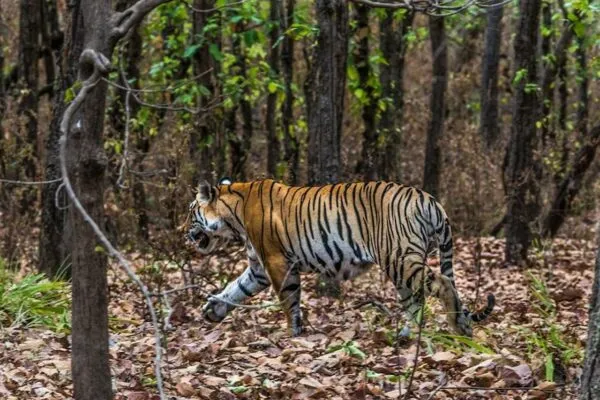Rajasthan to Connect Three of its Tiger Reserves via Wildlife Corridor
The Ministry of Environment, Forest and Climate Change (MoEFCC) recently approved India’s 52nd tiger sanctuary. After getting the Centre’s affirmation for the establishment of the Ramgarh Vishdhari Tiger Reserve (RVTR), the Rajasthan government is planning to connect three of its tiger reserves via a wildlife corridor.
This proposed tiger corridor will connect the newly sanctioned RVTR in Bundi district with Ranthambore Tiger Reserve in Sawai Madhopur and Mukundra Hills Tiger Reserve in Kota. Recommended by NTCA, the 1,052.12 square kilometre RVTR in Bundi district will the state’s fourth tiger reserve with a capacity to house 35 tigers.
Union Minister for MoEFCC shared the news via Twitter.
Happy to sanction one more tiger Sanctuary, Ramgarh Vishdhari Sanctuary which will link Ranthambore Tiger Reserve in the Northeast & Mukundra Hills Tiger Reserve on the southern side. Increasing numbers of Tigers and other apex predators certify our robust biodiversity. pic.twitter.com/Z89PlhzmTp
— Prakash Javadekar (@PrakashJavdekar) July 5, 2021
The 2018 tiger census put the tiger population in India at 2,967 individuals. Rajasthan has 69 tigers across three sanctuaries and accounts for India’s 10th largest tiger population.
For the past three decades, the state has been trying to develop a movement corridor for the big cats to move around Ranthambore and Sariska.
Mohan Lal Meena, Principal Chief Conservator of Forest and Chief Wildlife Warden, Rajasthan, said,
Tigers have always frequented the area demarked for the Ramgarh Vishdhari tiger sanctuary and even now, tigers regularly pass through this area from the direction of Ranthambore. It is adjoining the buffer area of the Ranthambore Tiger Reserve. This newly proposed tiger reserve in Bundi district will connect the Ranthambore Tiger Reserve in Sawai Madhopur district with the Mukundra Hills Tiger Reserve in Kota district.
He further added that a movement corridor connecting the three tiger reserves can be developed with the establishment of the new sanctuary.
To accomplish this task, about eight villages will be relocated, however, a functional corridor in the region will deal with the issues of tiger overpopulation in Ranthambore and will minimise human-tiger conflicts.

Rajasthan government is planning to connect three of its tiger reserves via a wildlife corridor | Image: Theo Allofs/WWF-US
While the news of the development of a new corridor is being hailed as a good step, there is skepticism as well. According to an audit of India’s tiger reserves by the MoEFCC, there is an evident lack of scientific element in the management with no tangible efforts towards research or development of the sanctuaries.
Earlier this year, the state government said that two tigers and two cubs died at the Mukundra Tiger Reserve in the past two years while one went on a mission. The state is known for its bungled wildlife management style and animal deaths, mistakes that should not be repeated with the new reserve.
Via: Indian Express


